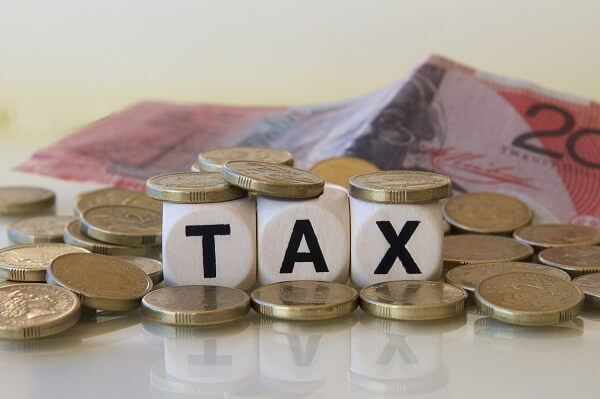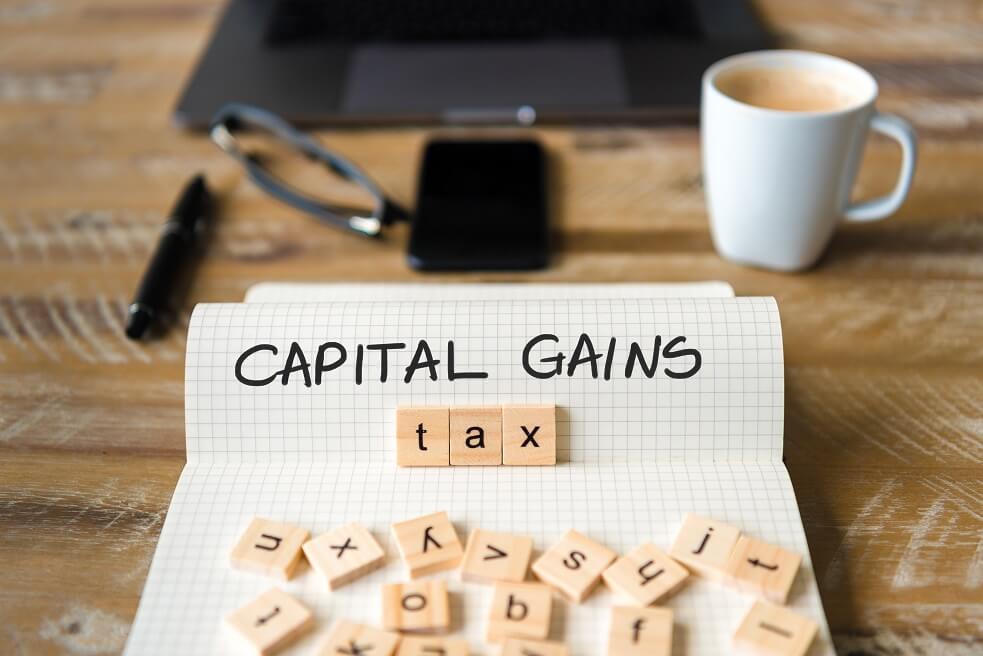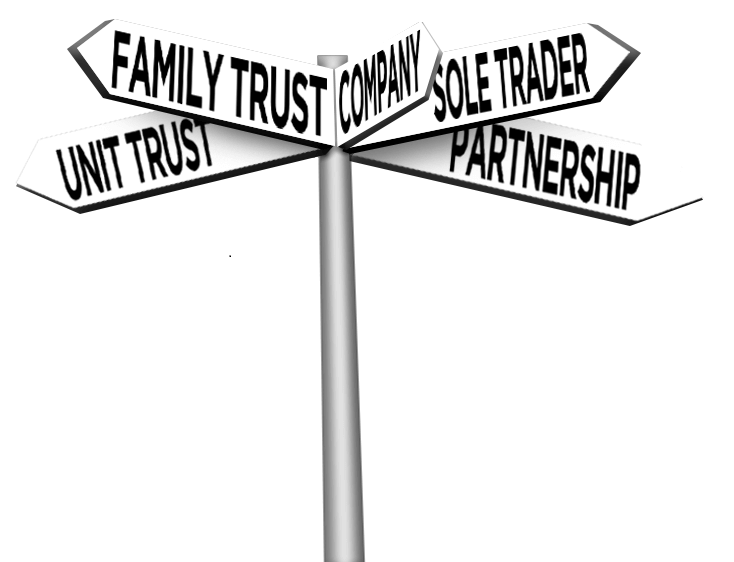What are the Tax Consequences of Different Business Structures?_320x268a.png)
The cornerstone of a business is your business structure. In Australia there are four main types of business structure - sole trader, trust, partnership or company. Each of these structures have different tax consequences that we will explore in this article.
Sole Trader
As a sole trader, you are effectively operating as an individual taxpayer and therefore your business profit is taxed at individual income tax rates. You report your business income in your individual tax return and the amount of tax you pay will depend on:
- Your level of business profit;
- Income from other sources including wages, interest; and
- any tax-deductible expenses you have incurred.
As a sole trader, you can offset any tax losses against your individual income. For example, if your business makes a loss you can offset that amount against your other income (salary etc.). Your taxable income is fundamentally your assessable income minus your tax deductions and the tax you pay in the 2018/19 financial year as an Australian resident is based on the table below. You’ll see there is no tax payable on the first $18,200 of income and every dollar over $180,000 is taxed at 45 cents (plus the Medicare levy).
| Taxable Income |
Tax Payable |

|
| 0 – $18,200 |
Nil |
|
| $18,201 – $37,000 |
19c for each $1 over $18,200 |
|
| $37,001 – $90,000 |
$3,572 plus 32.5c for each $1 over $37,000 |
|
| $90,001 – $180,000 |
$20,797 plus 37c for each $1 over $90,000 |
|
| $180,001 and over |
$54,097 plus 45c for each $1 over $180,000 |
As a sole trader, in certain situations you can receive a 50% discount on Capital Gains you need to include in your income. You must have owned the asset for 12 months or more and you can reduce the capital gain after applying all the capital losses for the tax year as well as other non-applied net capital losses from earlier years.
Company
Companies also lodge a company tax return, but they don’t get the benefit of a tax-free threshold. Companies pay a flat rate of tax on their taxable income and there are two different company income tax rates:
- the 27.5% base rate for companies that have an aggregated annual turnover of less than $50 million; and
- 30% rate that applies to companies that have an aggregated turnover of more than $50 million.
Unlike a sole trader, you can’t offset any tax losses against your individual income. Instead, the losses are carried forward to be offset against future profits. The flat rate of tax can be attractive to a highly profitable business - for example, if the taxable income was $500k the company would pay tax of $137,500 based on a 27.5% tax rate. A sole trader would pay tax of $198,097 on a $500k taxable income.
A company is a separate legal entity that can sue and be sued and as such, they can provide additional asset protection benefits. The shareholders own the shares in the company and the company can distribute their profits to shareholders by issuing dividends. These dividends are taxable in the hands of the shareholders; however, the Australian imputation system provides shareholders with a tax credit for the tax already paid by the company on those profits.
 Companies do not receive the 50% Capital Gains Tax (CGT) discount like sole traders and individuals. However, if your company is a ‘small
business entity’, you could be eligible for the small business CGT concessions if:
Companies do not receive the 50% Capital Gains Tax (CGT) discount like sole traders and individuals. However, if your company is a ‘small
business entity’, you could be eligible for the small business CGT concessions if:
- the business has an aggregated turnover of less than $2M; or
- the company has a total net value of assets (including any affiliated entities like subsidiary companies) not exceeding $6M.
The small business CGT concessions allow you to disregard some or all of the capital gains made from the sale of an asset used in the course of carrying on a business, or an asset inherently connected with the business. If you sell an active asset that has been continuously owned for 15 years, and you are aged 55 or over and retiring, you can disregard the entire capital gain. If this 15-year exemption is not available, you can:
- reduce the capital gain by 50%;
- use the small business retirement exemption to reduce the capital gain for amounts up to $500,000; or
- defer all or part of the capital gain for two years or longer if you acquire a replacement active asset or spent money on making capital improvements on that active asset.
The purpose of these concessions is to boost your cashflow and potentially eliminate the tax payable on exiting a business.
Trust 
A family trust (or discretionary trust) is an agreement where a person or a company agrees to hold assets for others' benefit - usually their family members. It is often set up by families to own assets and they don't pay tax. Trusts distribute their ‘net income’ and capital gains to their beneficiaries who in turn pay tax in their own right.
The word ‘discretionary’ relates to the trustee’s powers to distribute the net income and any capital gains made by the trust at their discretion each financial year. They decide how much income (if any) each beneficiary receives each year. By contrast, a unit trust distributes the trust income and capital gains based on the number of units held by the unit holders.
A family trust offers some level of protection over your personal assets. For example, in most situations, a creditor cannot access a trustee’s personal assets in the event of bankruptcy. Likewise, creditors cannot take assets held by a company trustee in the event of that company’s liquidation, subject to some exceptions.
It's vitally important that you set up the trust with the right trustee and beneficiaries and annual tax planning is crucial to ensure the net income is distributed to the beneficiaries to minimise the tax liability.
Partnerships
Partnerships are formed when two or more people (up to 20 people) go into business together. Partnerships are governed by the Partnership Act 1958.
There are several forms of partnership including general partnerships and limited partnerships. A general partnership is where all the partners are equally responsible for the management of the business and each partner has unlimited liability for the debts of the business. A limited partnership is where the liability of one or more of the partners for the debts and obligations of the business is limited.
The partnership has its own tax file number and lodges an income tax return, however, it does not pay tax. The profit or losses of the partnership are divided among the partners and the partners pay tax in their own right. The partners' entitlement to a share of the profit or loss will be based on the terms detailed in the Partnership Agreement. Subject to certain conditions, a partner’s share of any tax losses may be offset against other personal income.
A partnership is not a separate legal entity and partnerships allows tax incentives and tax-free capital gains concessions to be passed through the partners.
Personal Services Income
A word of warning regarding Personal Services Income (PSI) rules if you run your business by yourself. These rules apply where you produce your income mainly from your personal skills or efforts as an individual and the PSI rules apply in almost any industry or profession. Commonly, professionals in the financial industry, information technology consultants, engineers, construction workers and medical practitioners are caught under the PSI rules. If the ATO classifies your income as PSI, they will ignore your business structure and your business profits will be taxed as if you were an individual taxpayer. As a guide, if you have employees or you are selling goods, the PSI rules are unlikely to apply.
Summary
Your choice of business structure is a critical business decision and whenever we provide advice on business structures, we always take into
account issues like:
- Minimisation of Income Tax
- Protection of Your Personal Assets
- The Potential Admission of New Business Partners or Investors
- Legal Requirements in your Industry
- Entitlement to Discount Capital Gains Tax Concessions
When evaluating alternative business structures, you also need to take into consideration the likely profitability of the business, the current tax position of all stakeholders and the risk profile of the industry. In some industries, participants often have a preference for the sole trader or company option. Consequently, we often find the business structure is a compromise based on the relative importance of these issues
This article does not substitute for professional advice and every case is different. If you need advice on choosing the right structure for your business, we invite you to talk to us today.
This article forms part of our Business Accelerator Magazine. Download the latest edition HERE or browse other articles from this edition below:




.png)






